English Version
Hello travellers' community. Many congratulations for the new year. On the occasion of the end of the year celebrations, I would like to share with you a review of my visit to the Havana Club Rum Museum. I confess that I don't drink rum, but I was interested in learning about the history and production of one of the best rums in the world and a symbol of Cuban identity. This museum is located next to the avenue of the port in the municipality of Habana Vieja, occupying an old restored colonial mansion of the 18th century that belonged to the Count of La Montera. If you wish to visit it, you must make a reservation in advance, as the tours are guided and in English and Spanish. Without further ado, let us begin our tour.
Right in the lobby you will notice a sculpture of the Giraldilla, an icon of the city, which is present in the logo that identifies Havana Club rum. It represents Isabel de Bobadilla who was the wife of Hernando de Soto, Captain General of Cuba in 1538.
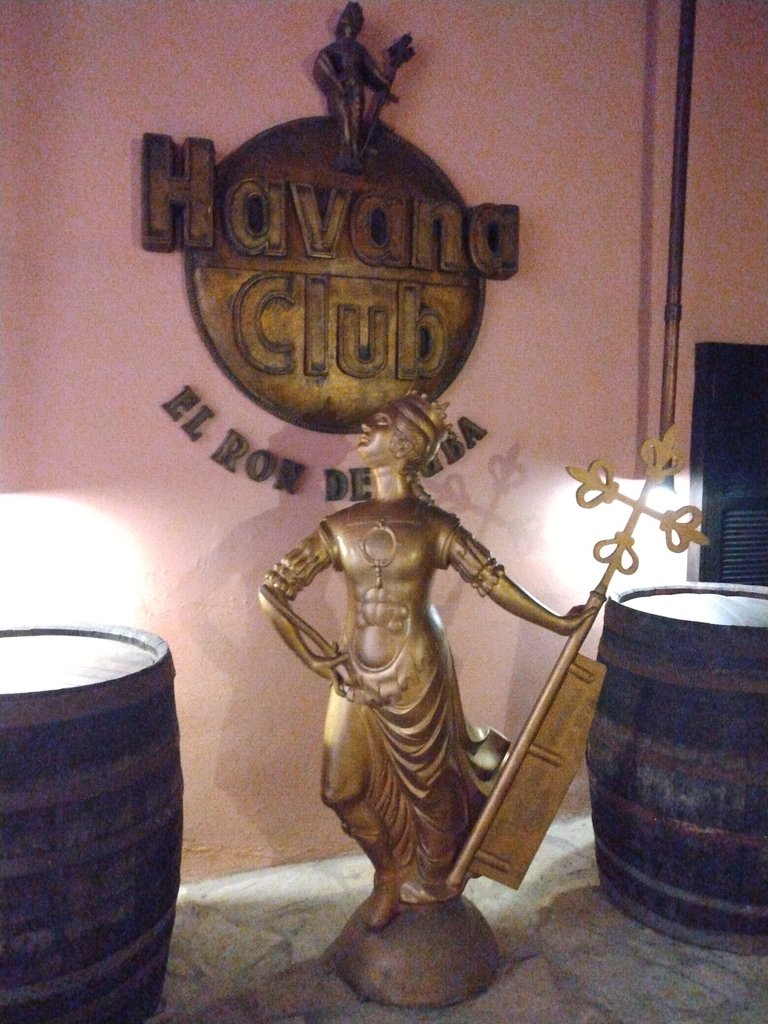
Then we come across a beautiful inner courtyard, a characteristic architectural element of the colonial period, ornamented with columns and beautiful stained glass windows. Here visitors sit and wait for their turn to make the rounds.
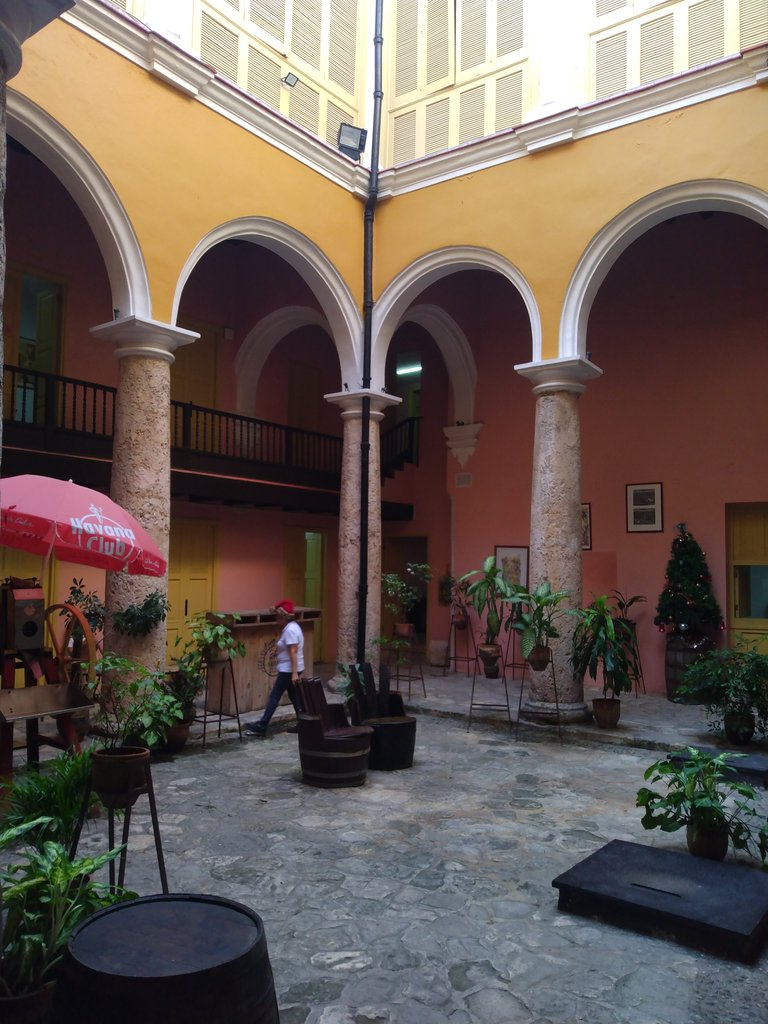

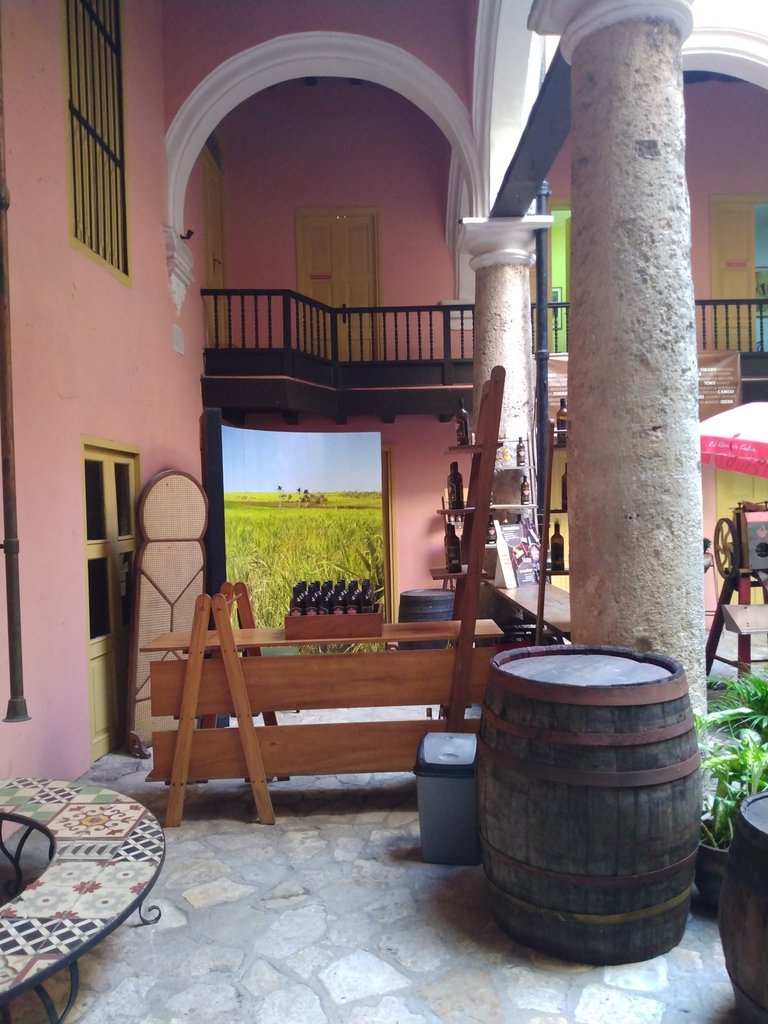
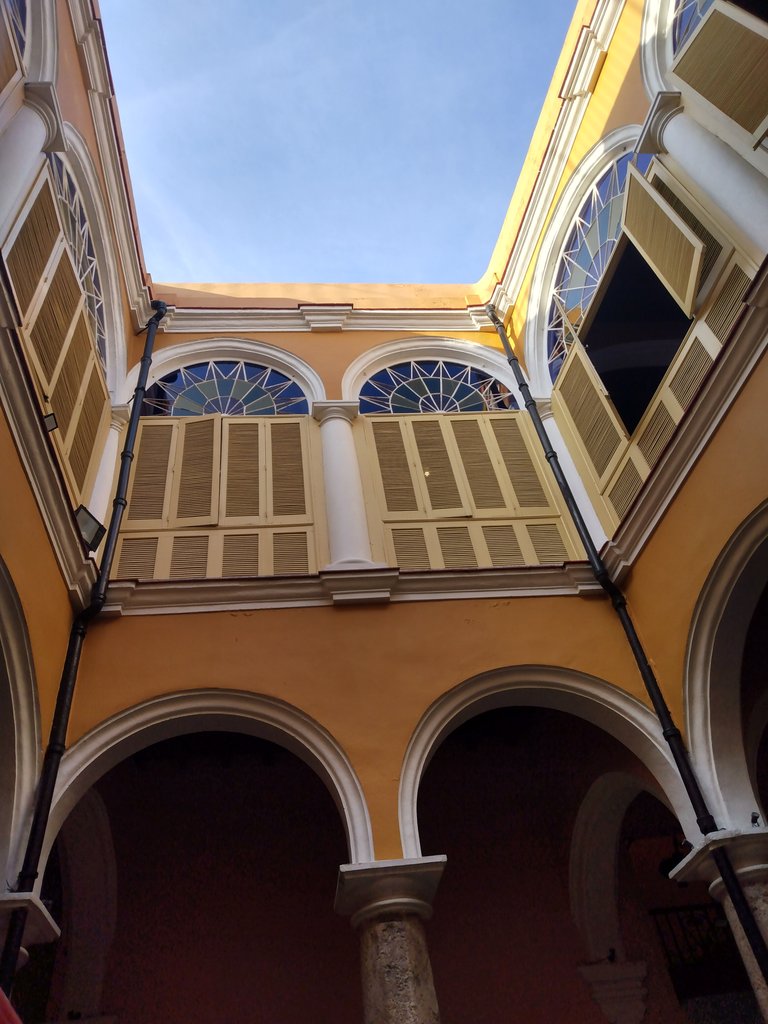
On one side of the inner courtyard is a whimsical sculpture of a peasant boy holding a bottle of the iconic rum, representing the connection between rum culture and the island's agricultural tradition, highlighting the role of the peasant in the production of sugar cane, the basic raw material for making rum.
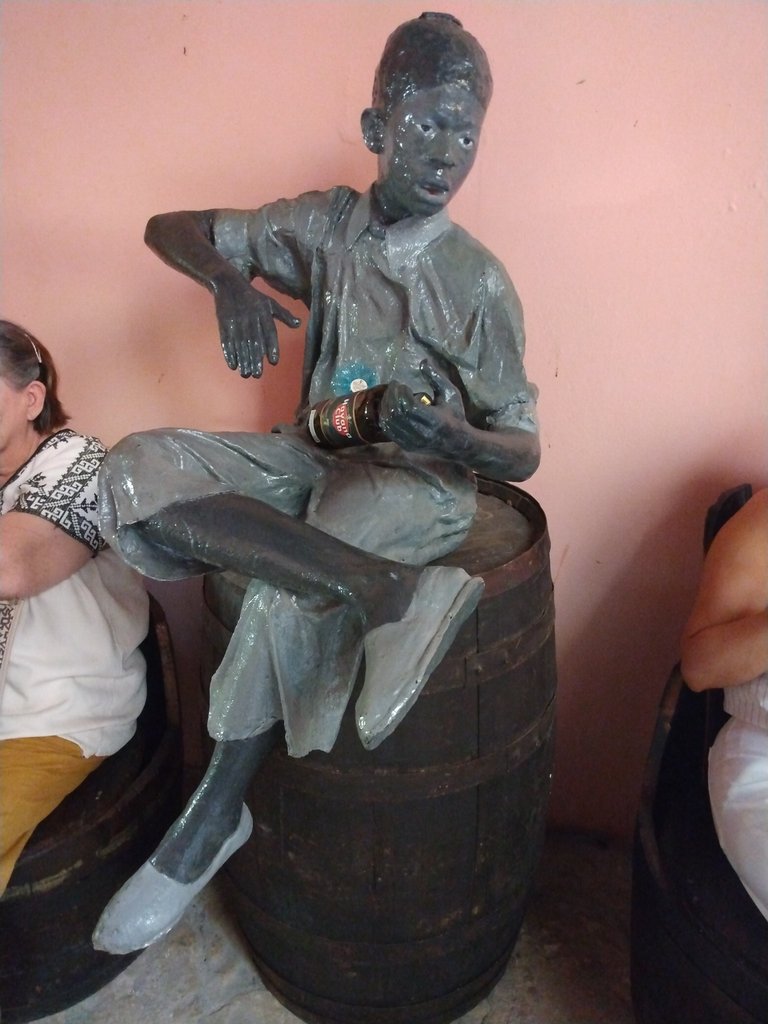
The tour begins with an ascent up a spiral staircase that leads to the first floor where the exhibition rooms are located, but first each visitor must ring the bell at the top of the staircase, which alludes to the tradition of the time, indicating the start of the working day at the sugar mill.
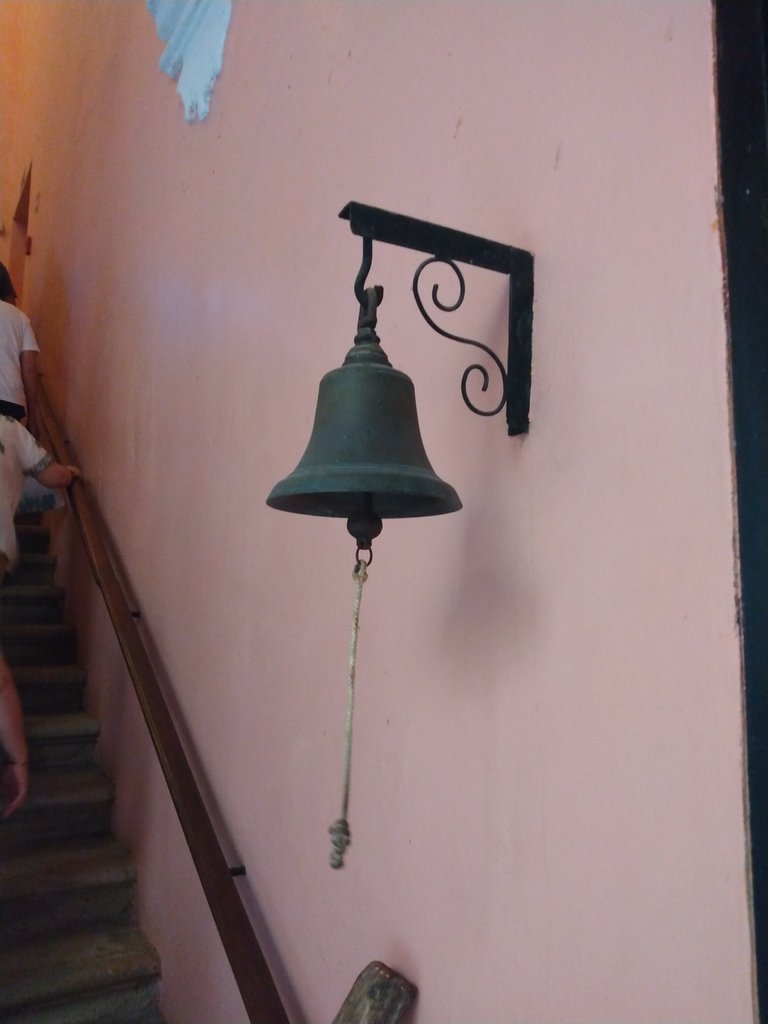
Along the way we come across some examples of utensils used in the mills for the production of the coveted drink. In this case, the photo below shows a 19th century alembic still.

On the first floor we enter a small room where visitors are shown an interesting 20-minute presentation on the history of Havana Club rum.

After the presentation we went to the first exhibition room where we found the old wooden trapiche used to extract the sugar cane juice known as ‘’guarapo‘’ (a very refreshing traditional drink), precisely this is the beginning of the process of elaboration of rum. It is important to emphasize that for the elaboration of this type of rum it is necessary that the sugar cane has been planted in Cuba, since the conditions of the Cuban soil and climate.
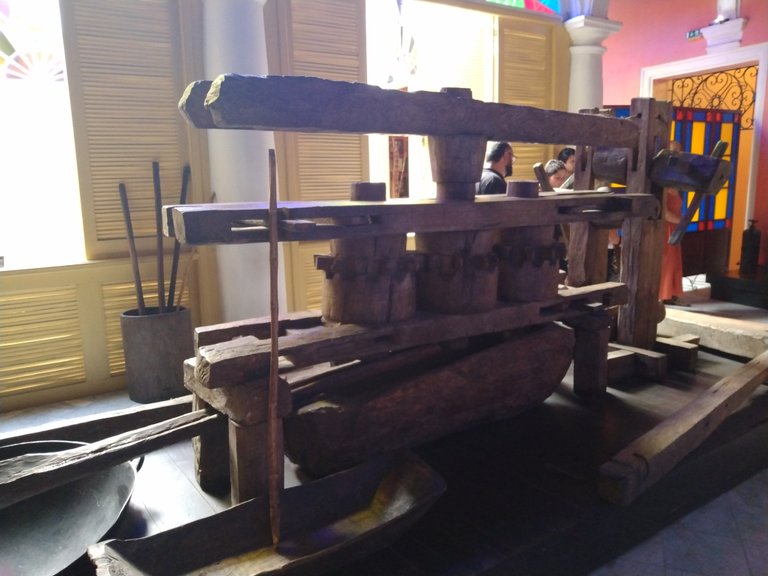
This shows the back of the trapiche, which consists of a set of rollers between which the sugar cane was introduced to be squeezed and the juice extracted.
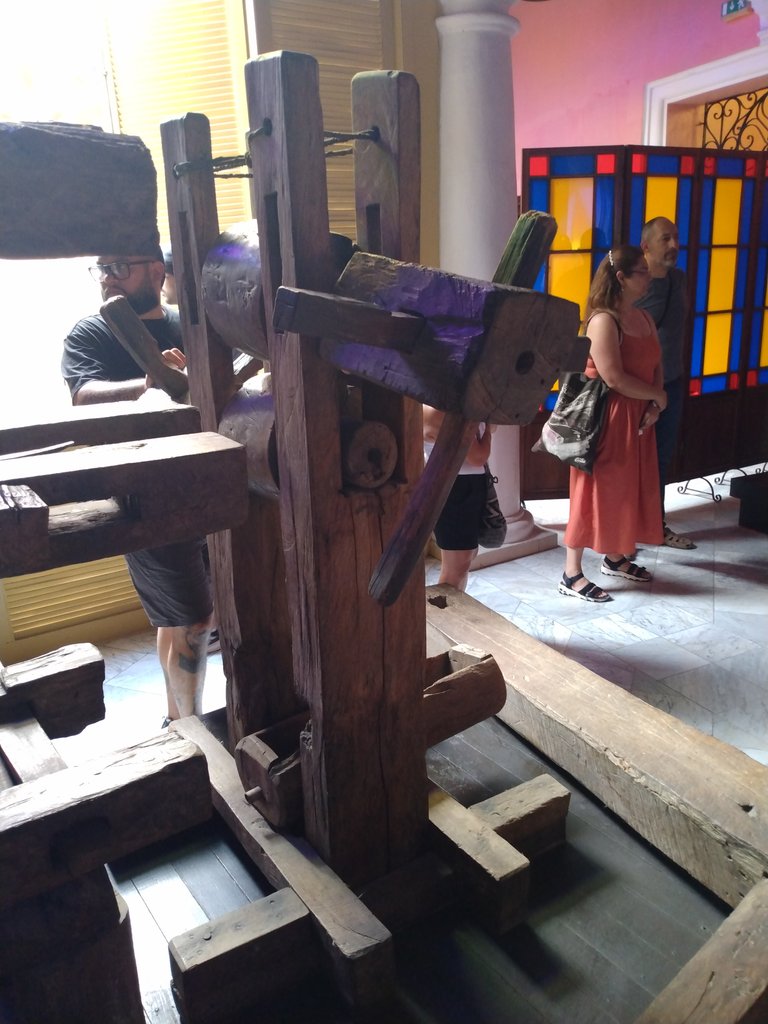
This juice then passed through a chute inside the device to a container in the shape of a giant deep frying pan where it was heated to a high temperature, resulting in a syrup that was left to cool at rest for 48 hours, during which time sugar crystals began to precipitate on the walls, leaving a residual liquid called ‘’molasses‘’, the first main ingredient that would contribute to the future mixture that would give rise to rum.
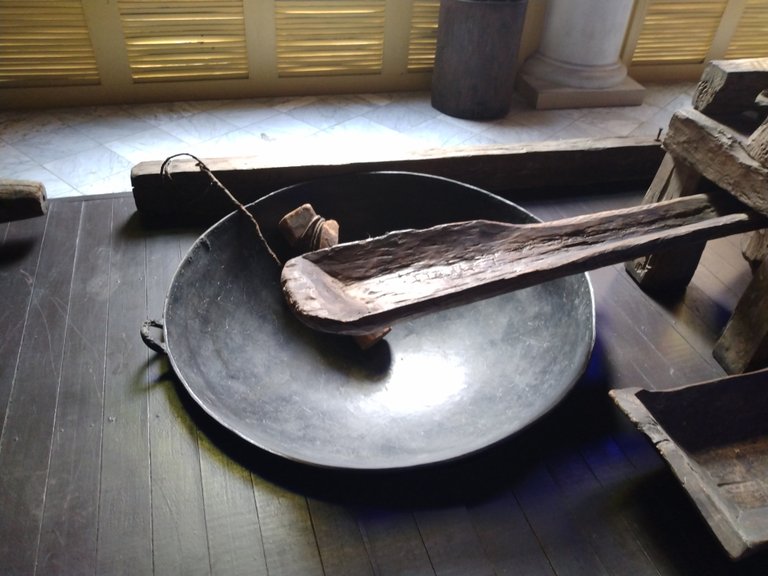
Warehouse where the cane juice crystallisation process was carried out.
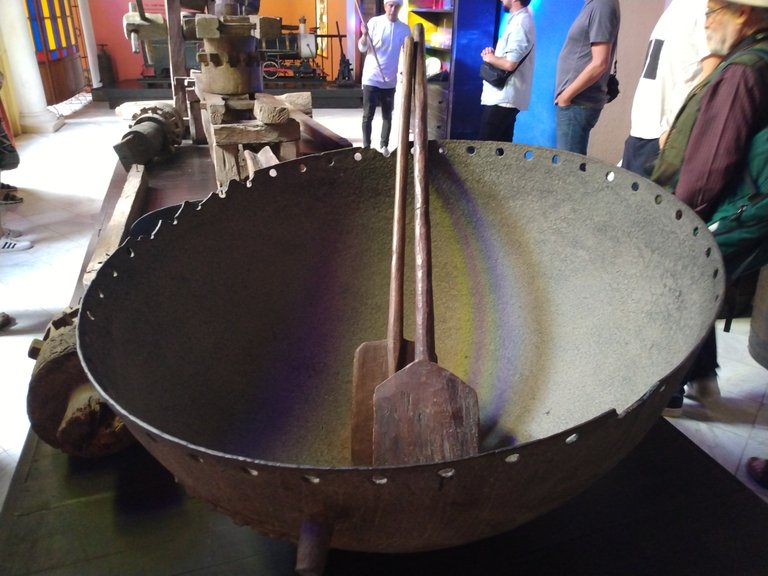
Other exhibits include a model of the steam locomotive that was used to transport sugar cane, because without the prolific railway industry of that period, the development of the sugar industry in Cuba would have been impossible.
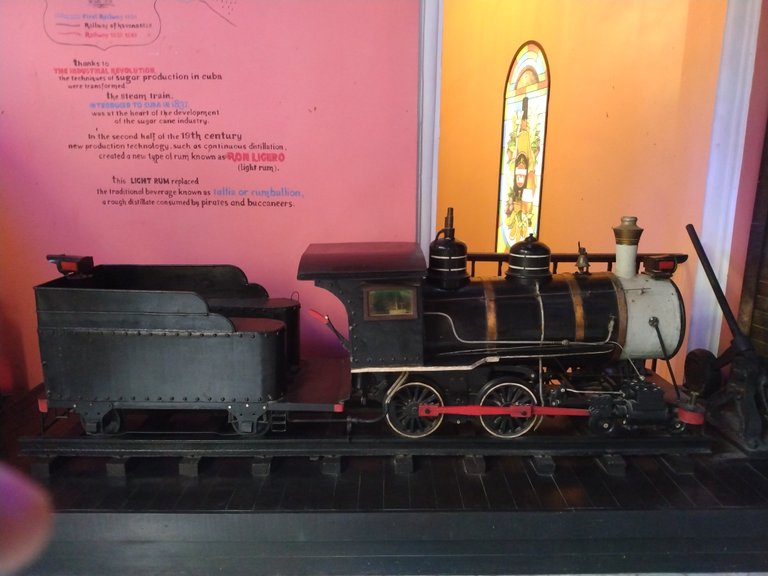
Samples of the main measuring instruments used in the production process.
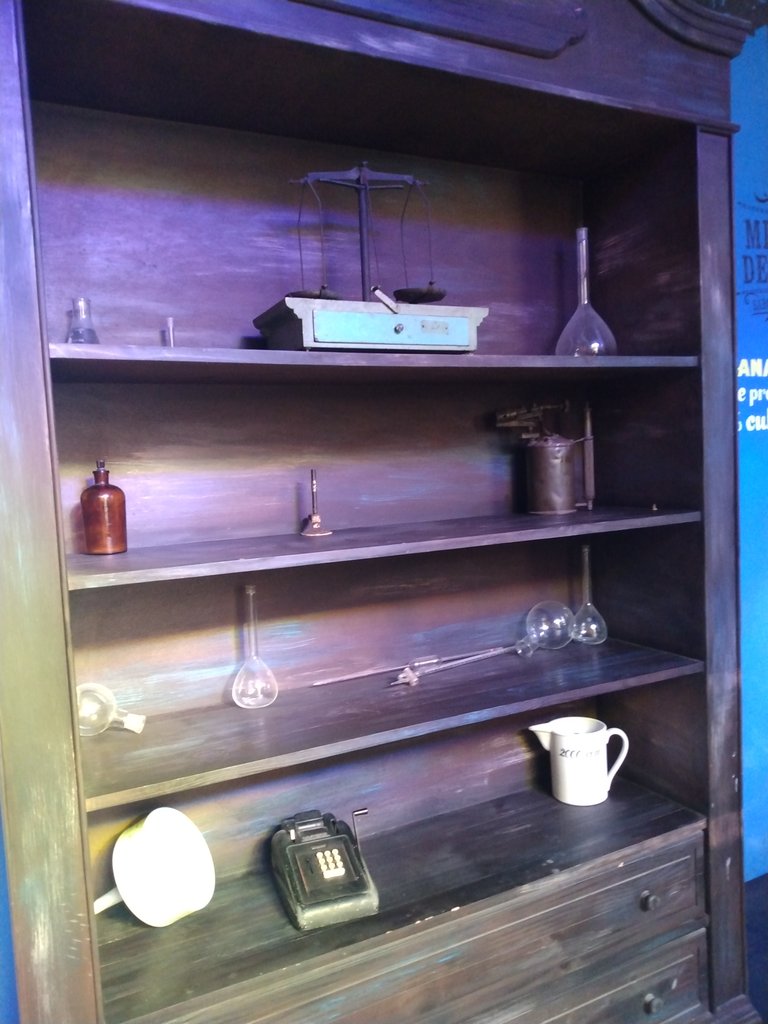
Then we enter a very peculiar enclosure where there is a beautiful model that shows us on a small scale what a typical factory used to be like where the sugar processes were carried out. Its designer was awarded the architecture prize in the 1990s for this work of art. Here we can enjoy the little train that runs around the perimeter of the model and the lights that come out of the buildings, bringing everything to life.
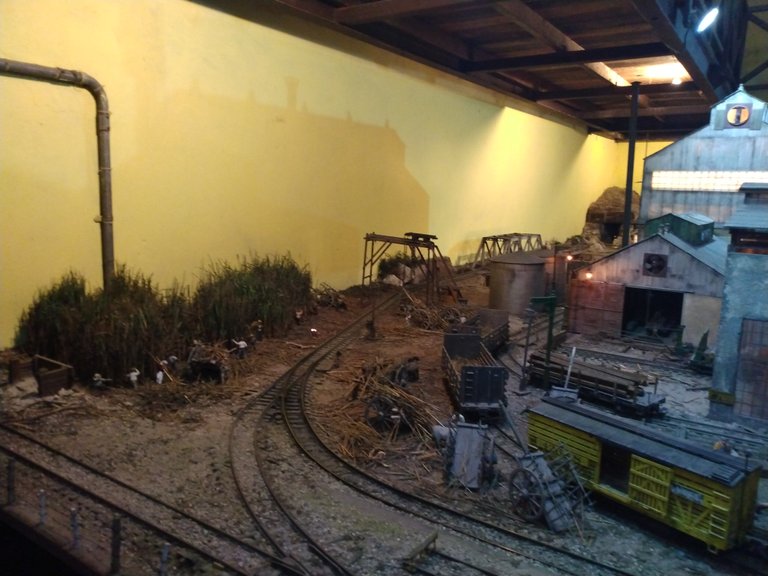
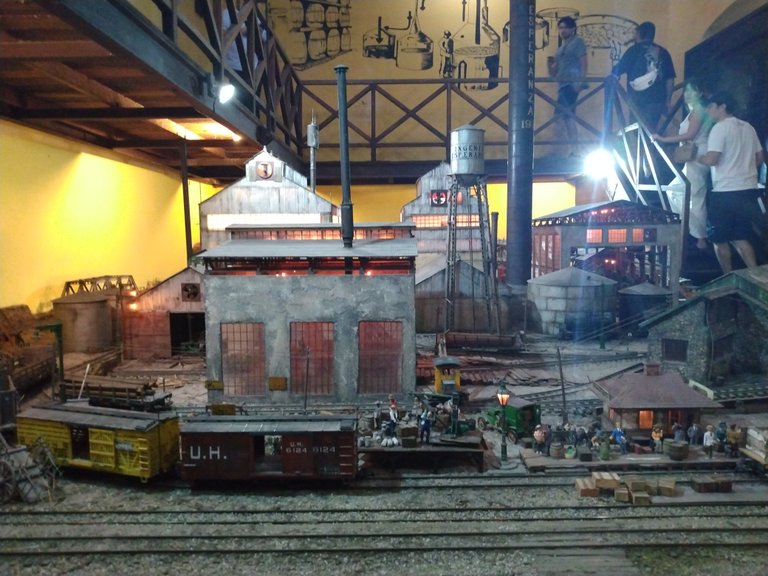
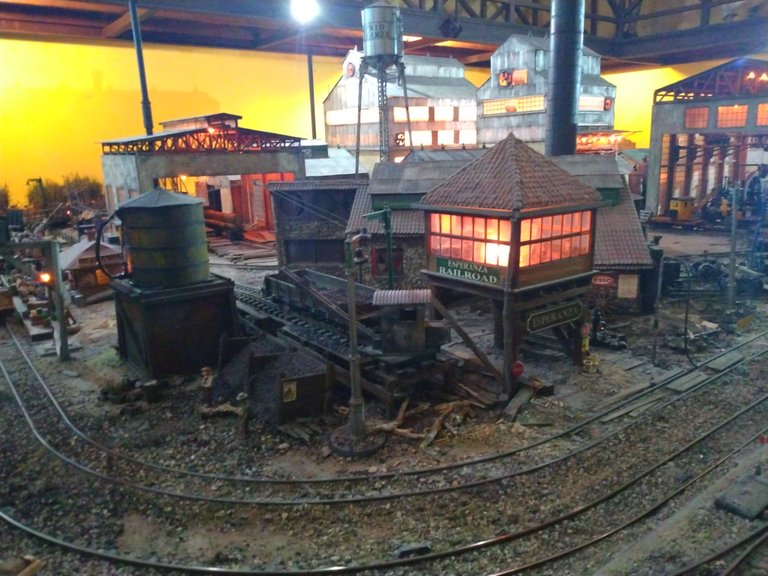
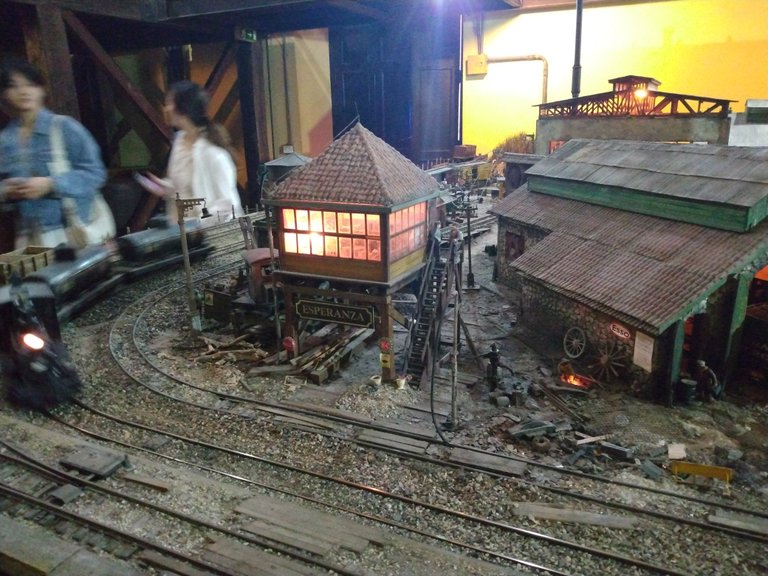

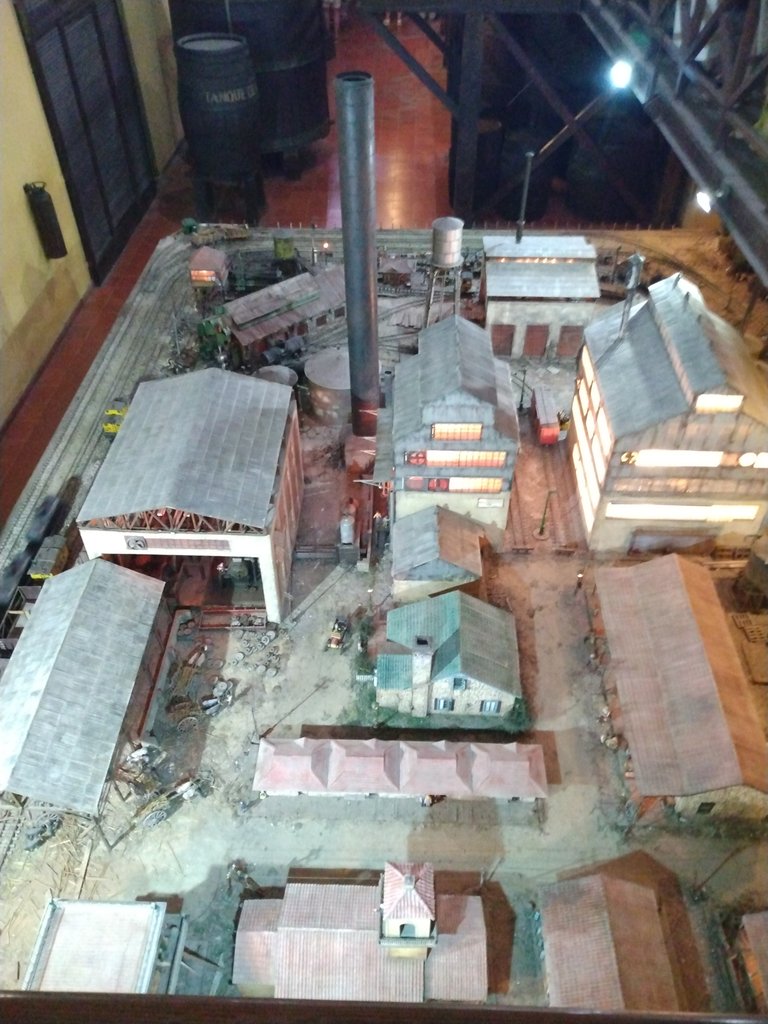
The next room is dedicated to the distillery and ageing stages, where molasses, water, alcohol and a special Havana Club yeast are combined and fermented in white oak barrels for a certain period of years determined by Cuba's rum masters.
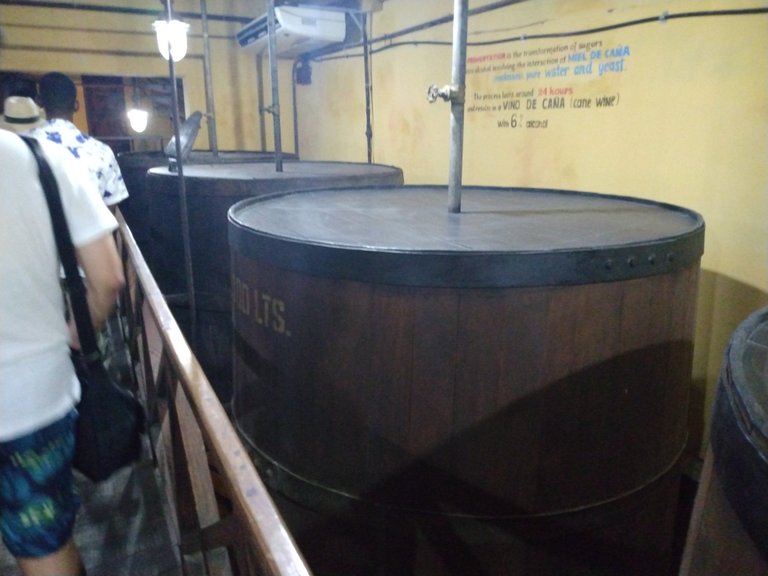
One of the barrels is partially uncovered so that the visitor can see an imitation of the mixture.
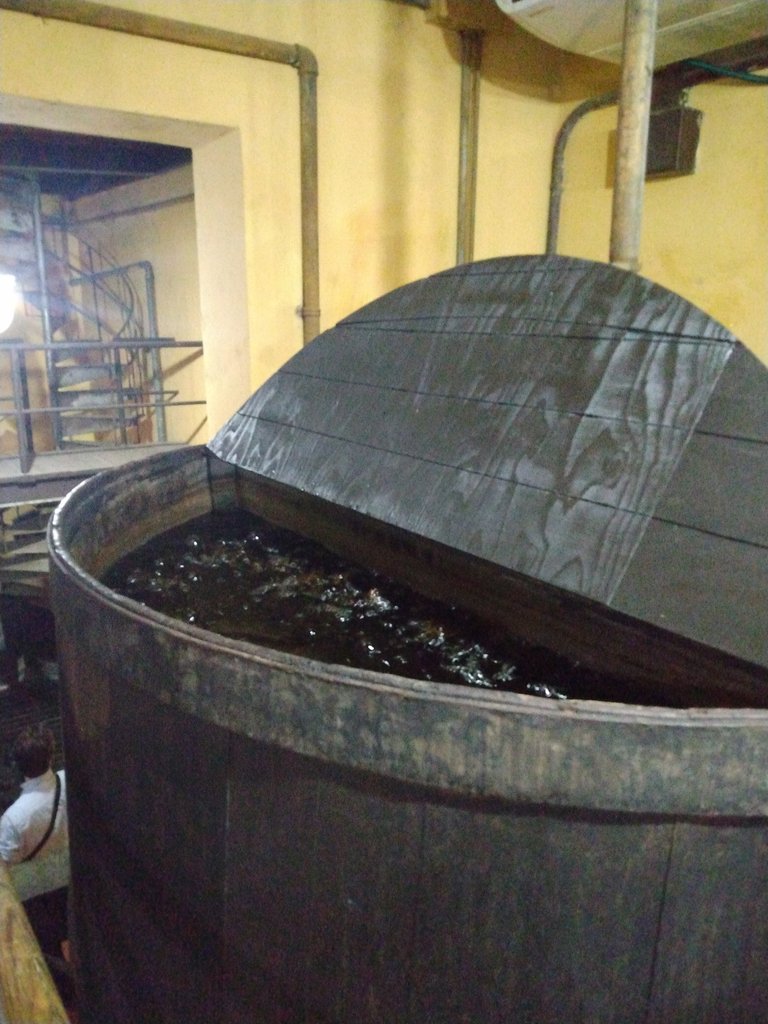
One interesting fact I found interesting is that these barrels must be at least 15 years old so that the rum does not acquire the taste of wood, the older they are the better. Also tell them that during the ageing process the barrels must not be touched, as the mixture must be at rest.
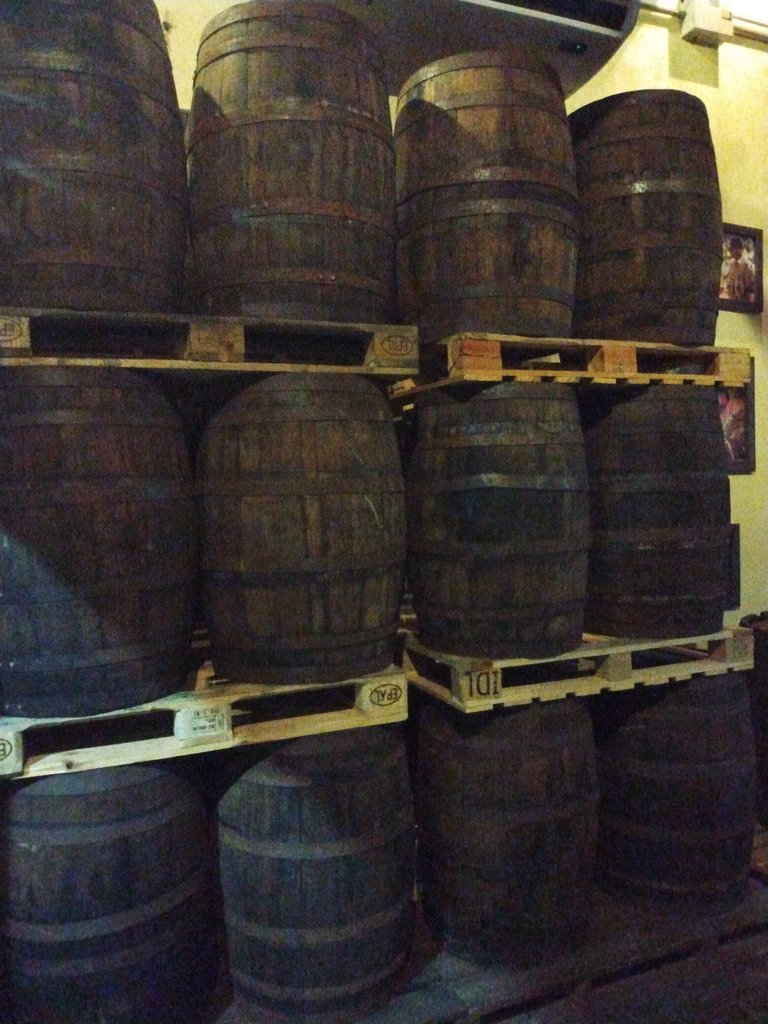
General view of the hall.
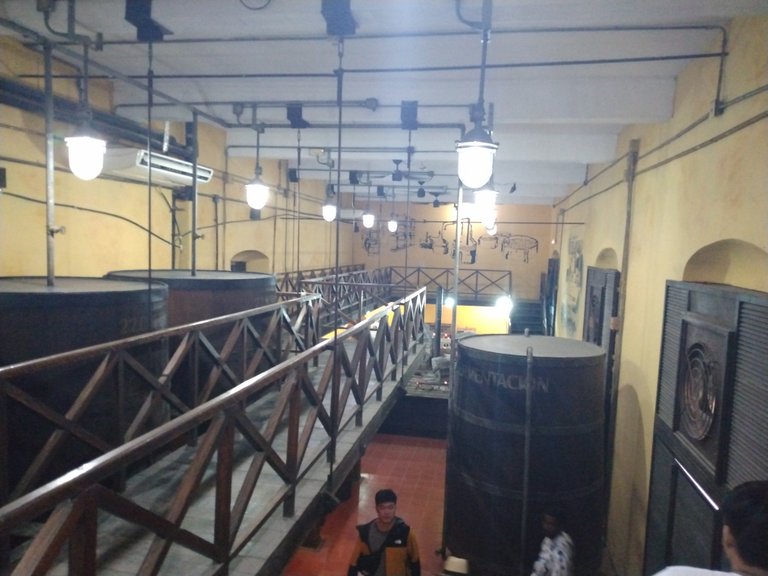
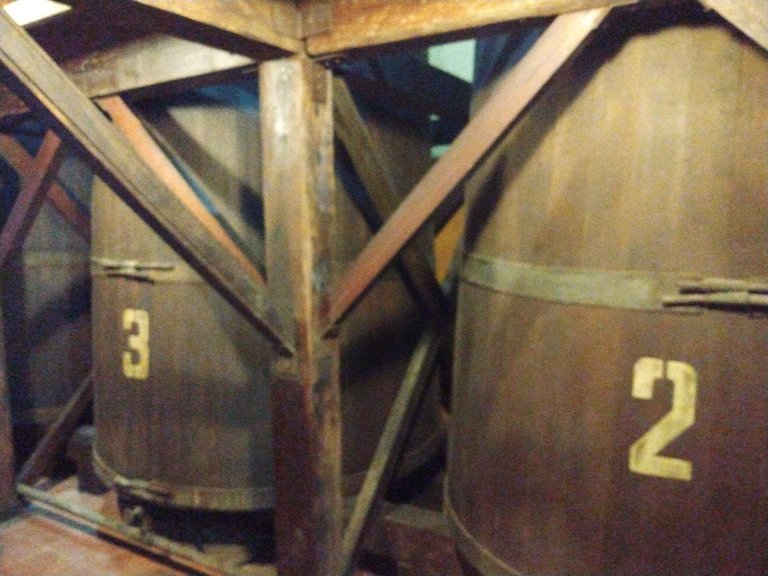
Here you can see the system of tanks used for the distillery processes. From the first distillation stage, a 75% alcohol burnt water is obtained.
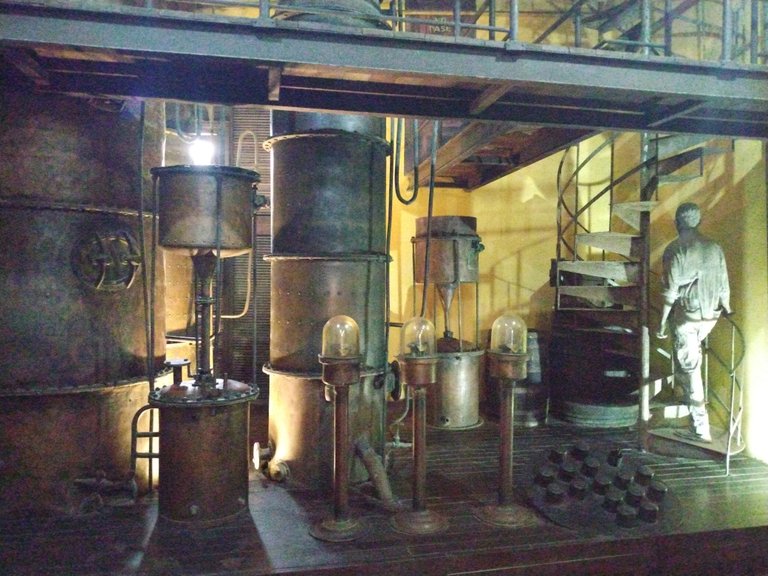
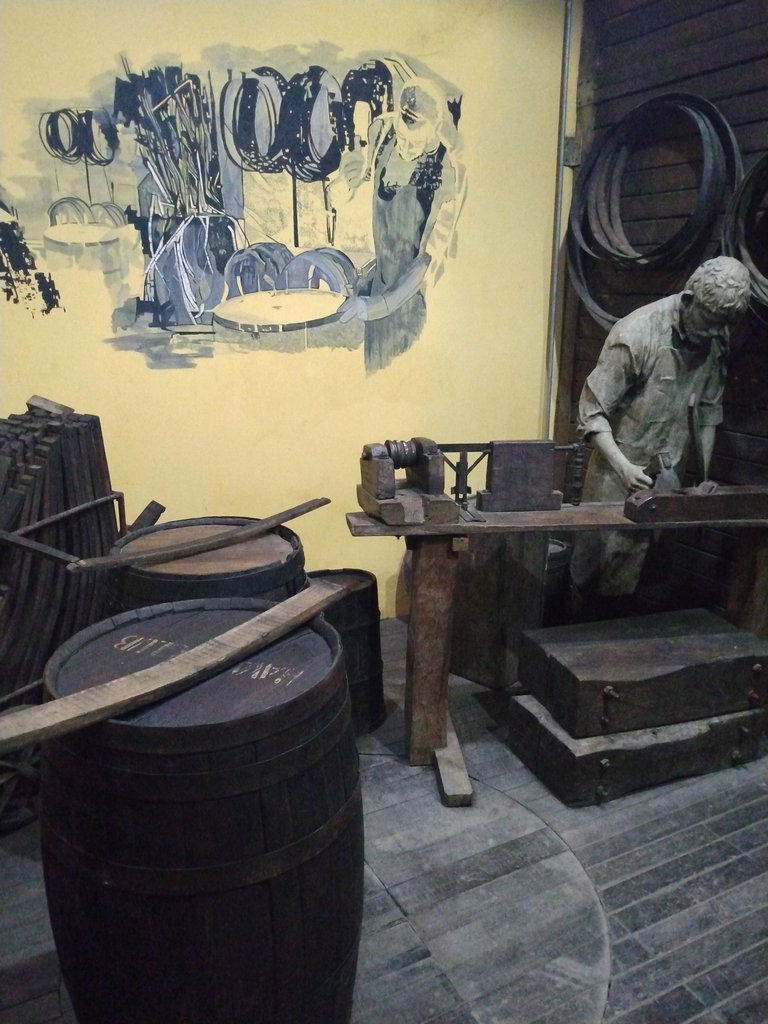

In addition to Havana Club rum, other varieties of rum are obtained as final products, which are displayed in the last exhibition room. In the photos below I show you each of them and their description.

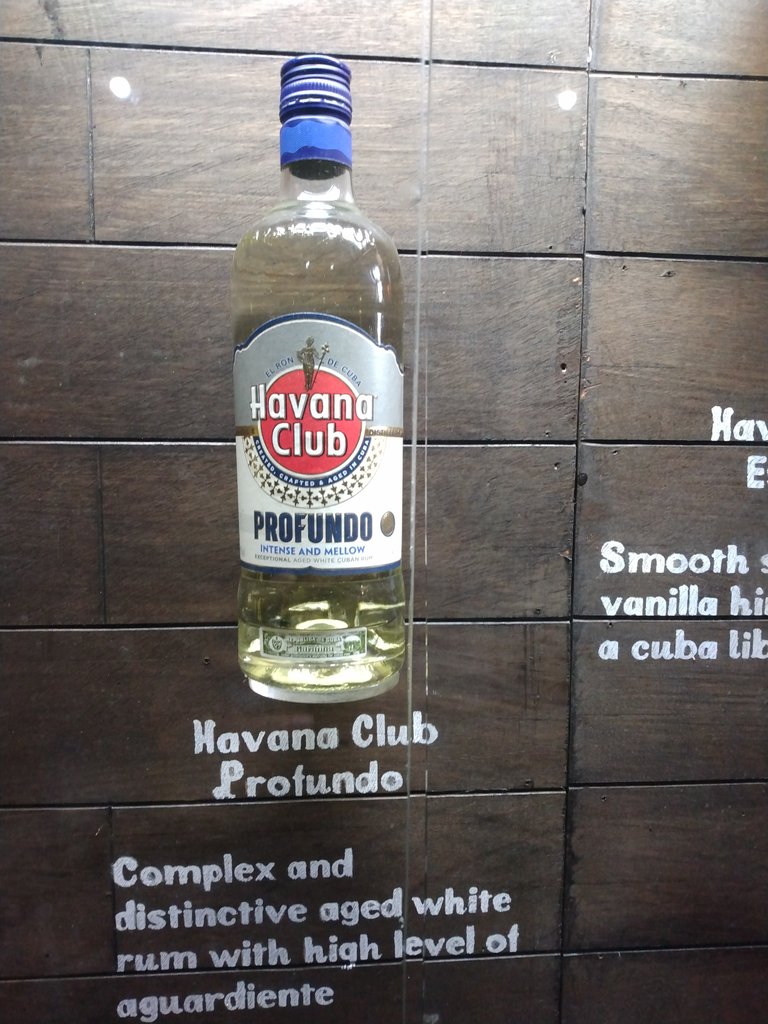
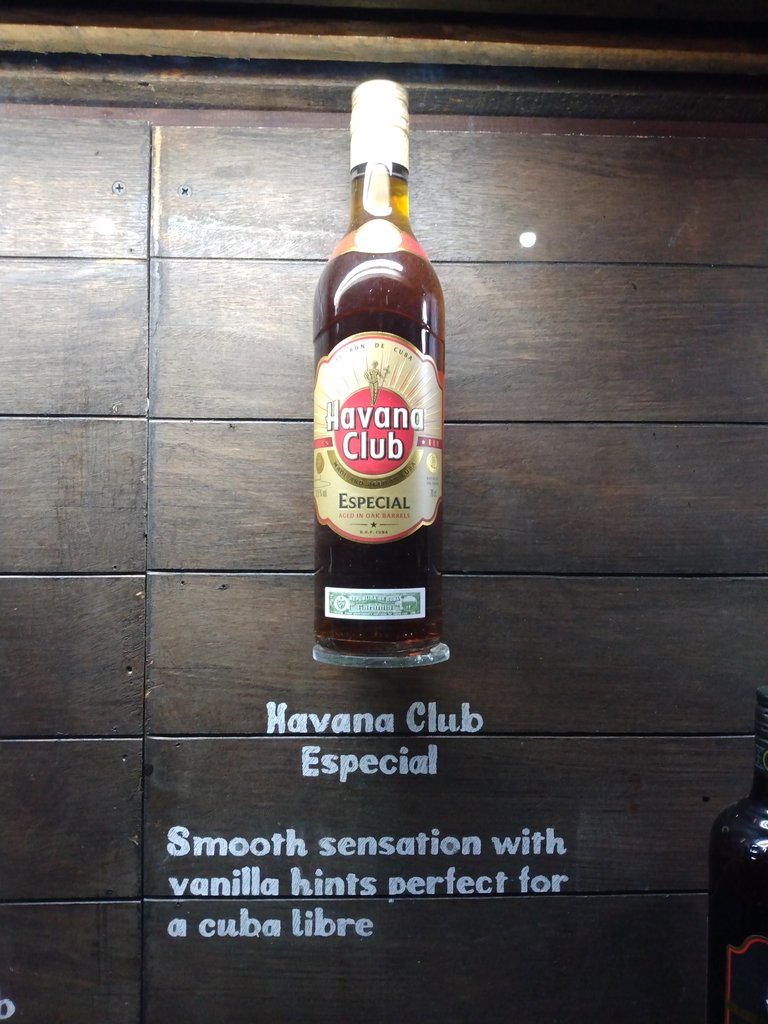
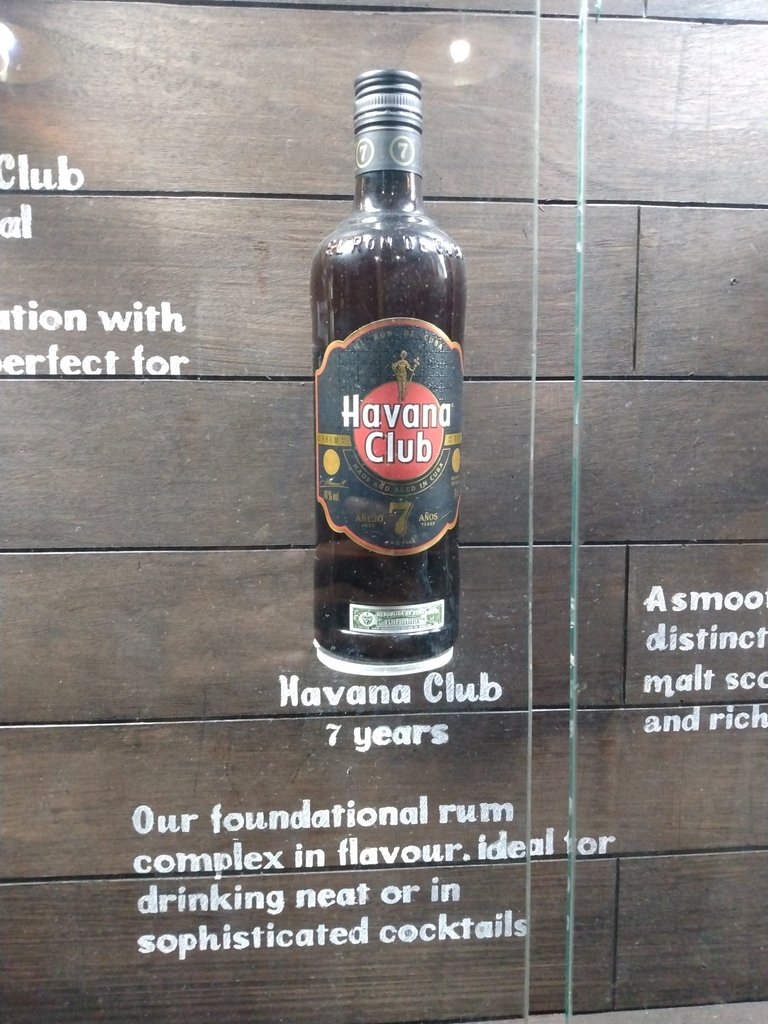
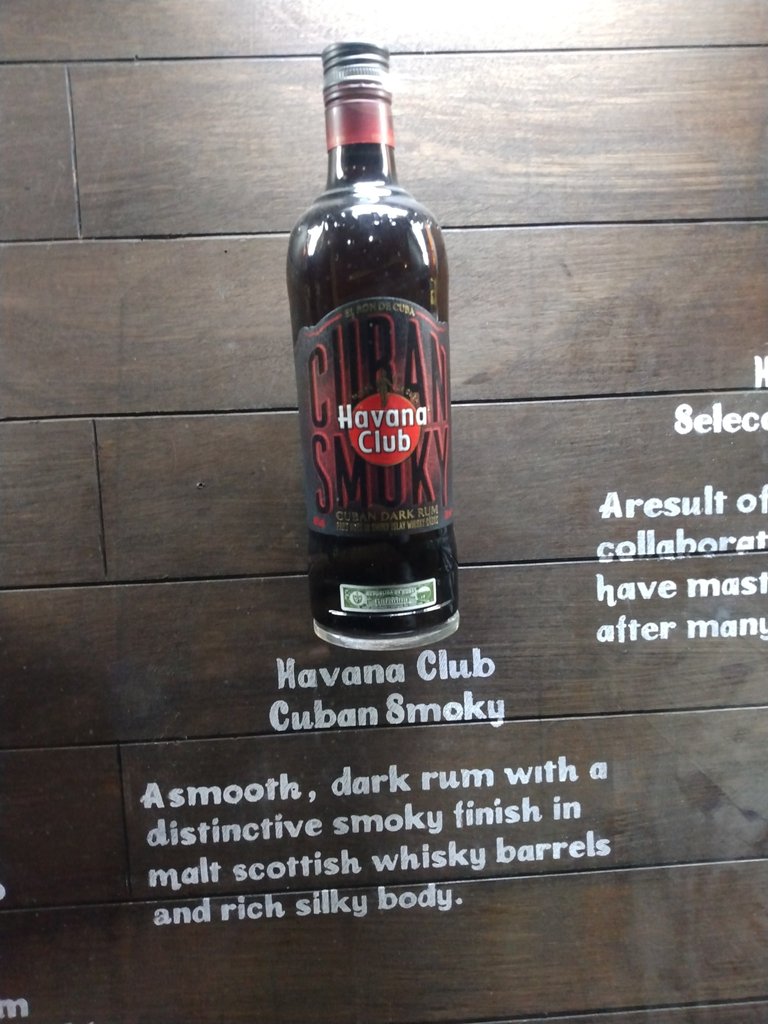

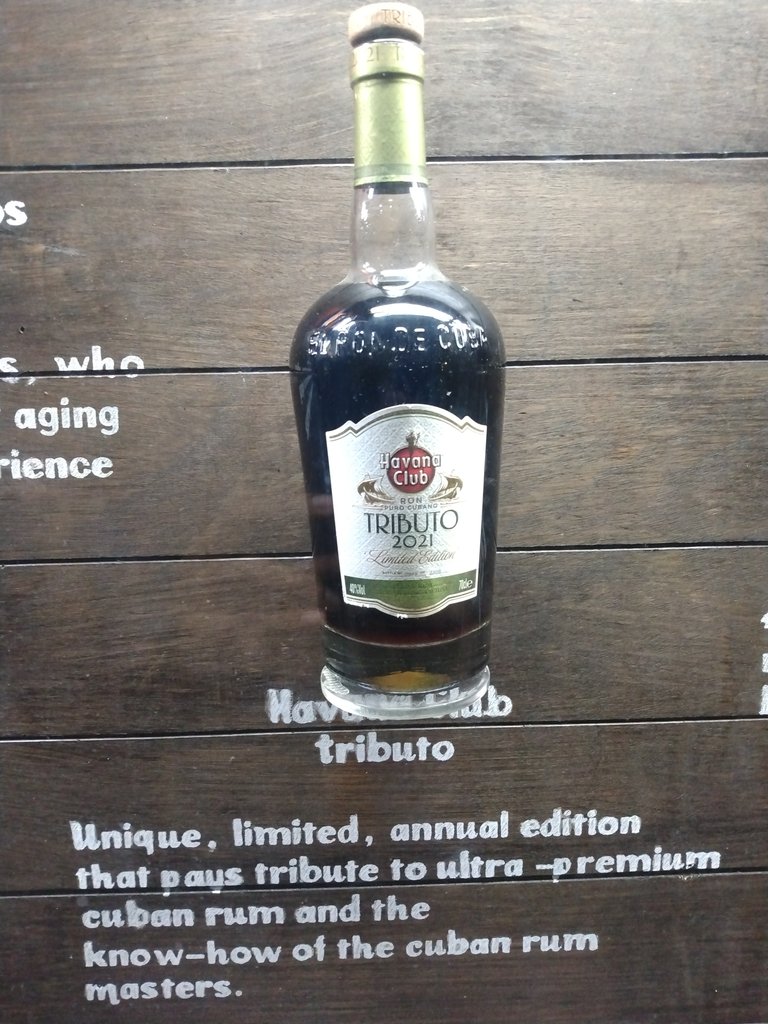
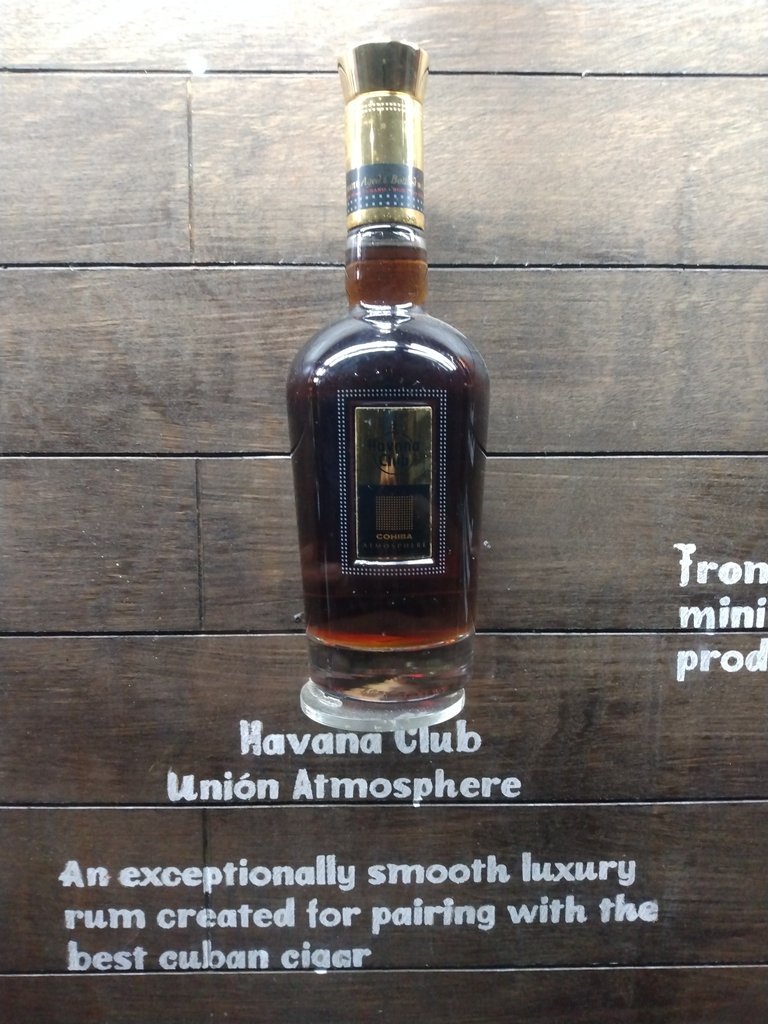
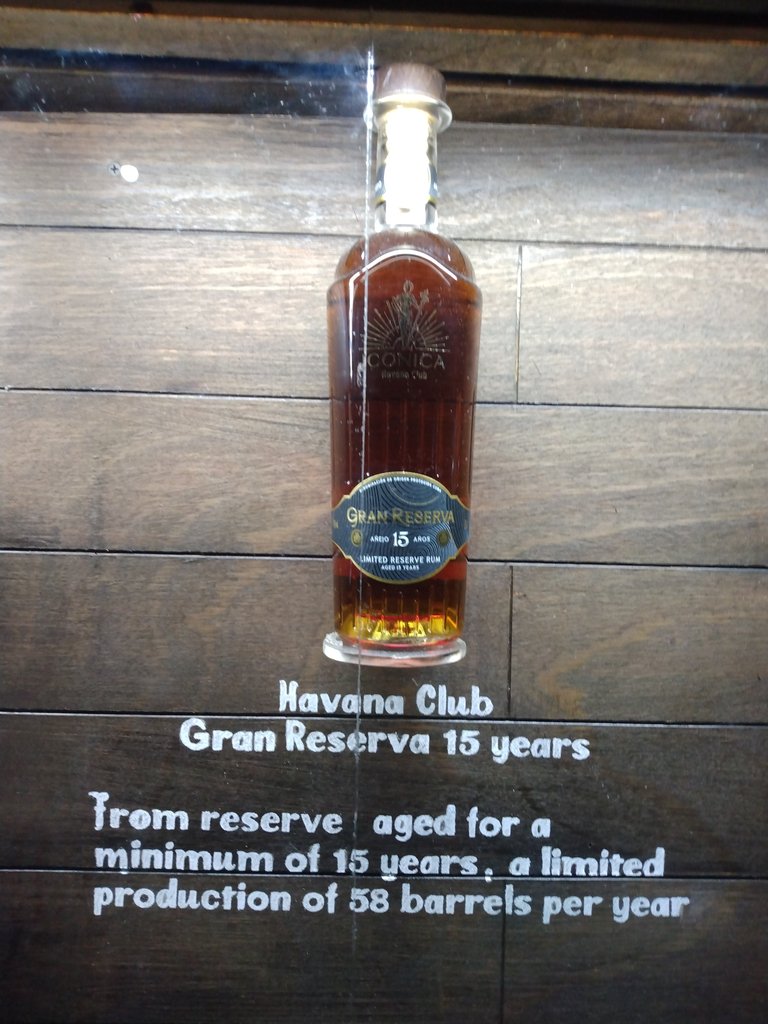
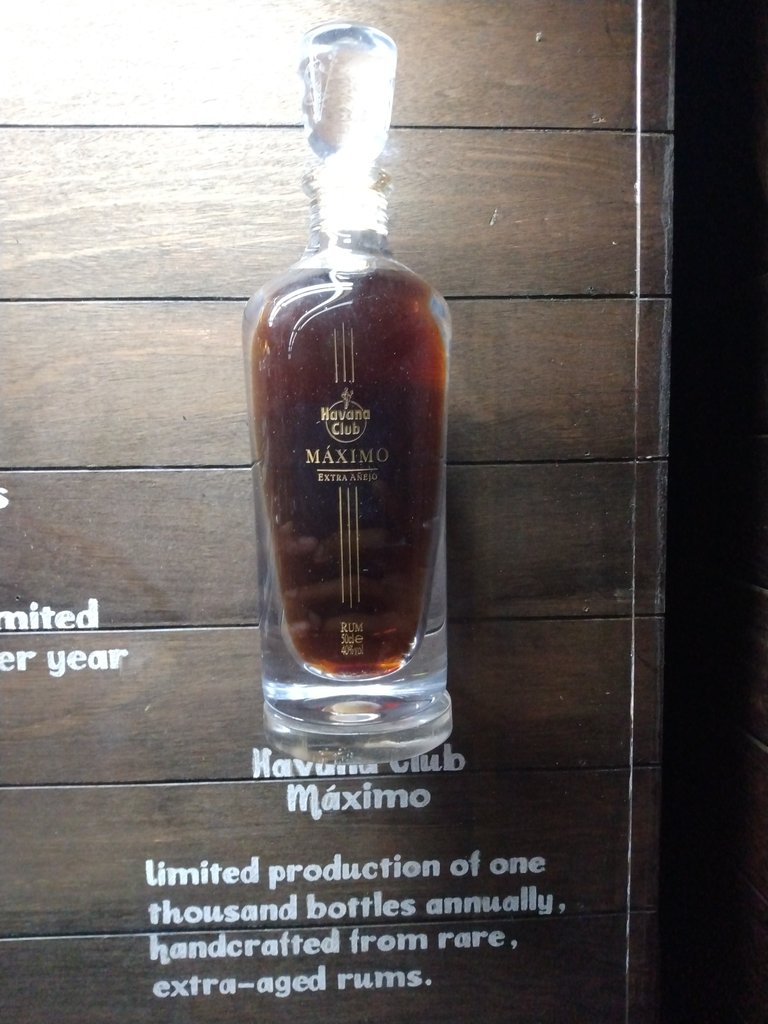
The tour ends with a sample of Havana Club rum at the bar.
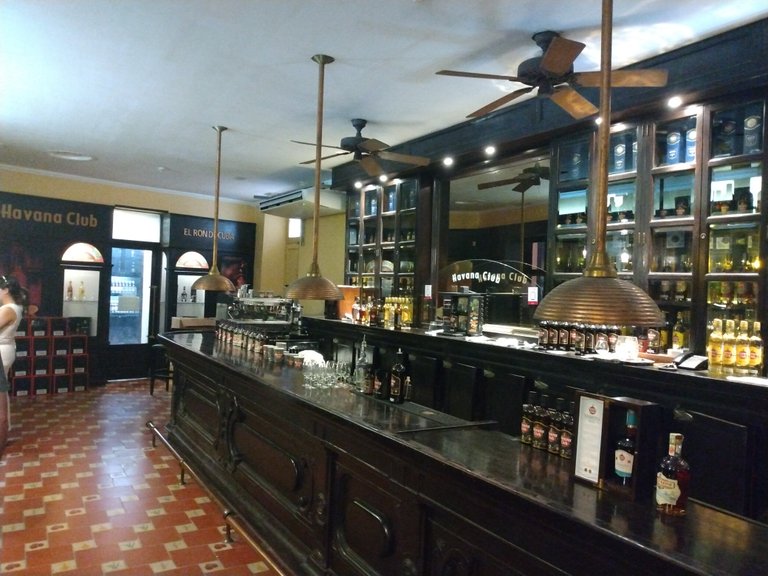
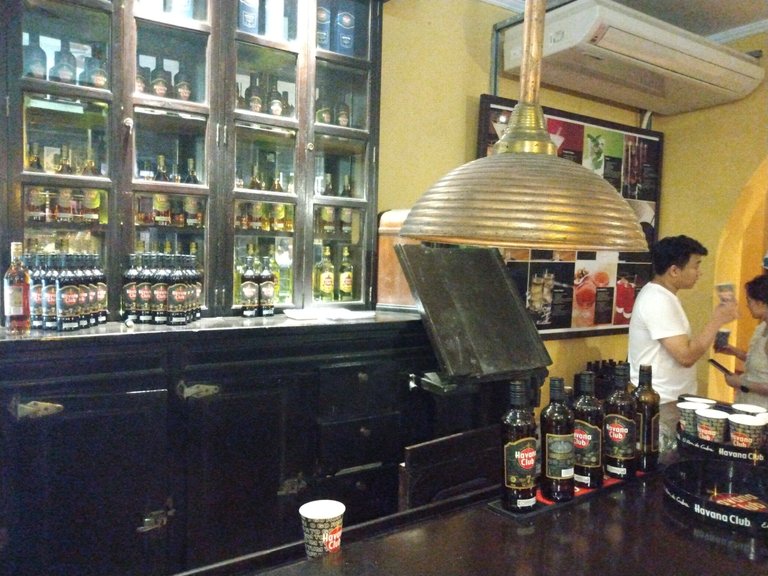
On one of its walls hangs a poster showing the varieties of drinks that use Cuban rum as a base.
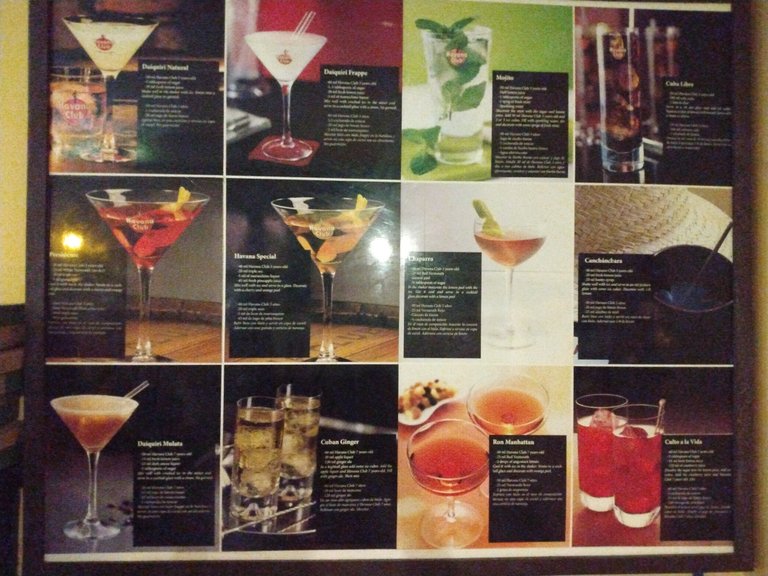
Photographs showing the main legendary bars in Havana where these coveted drinks are on offer.
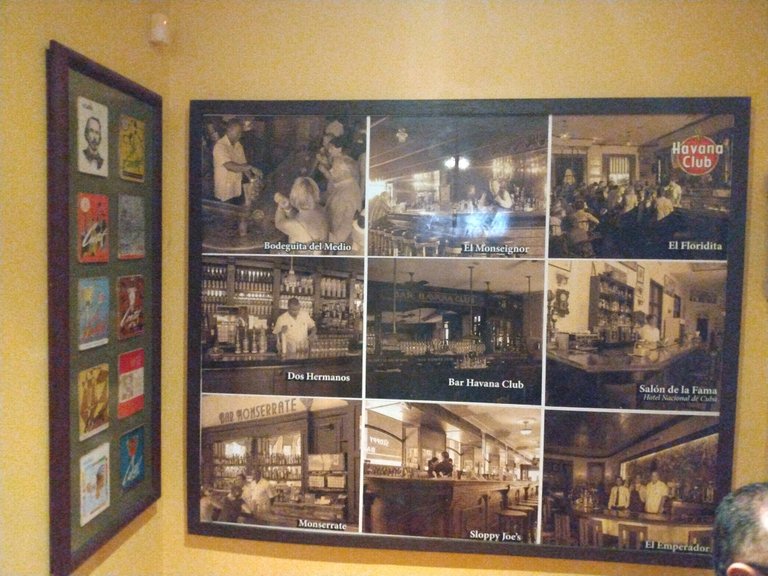
If you are interested in taking a bottle home after tasting, you can go to the shop in the museum itself.
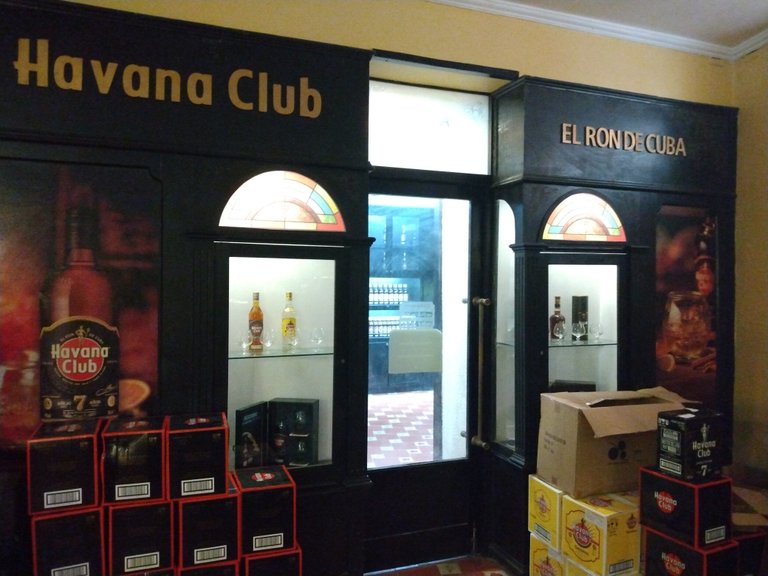
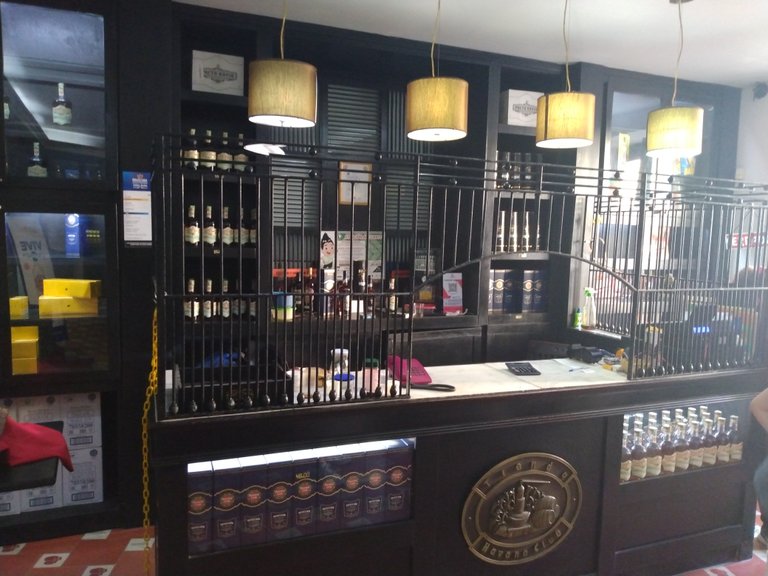
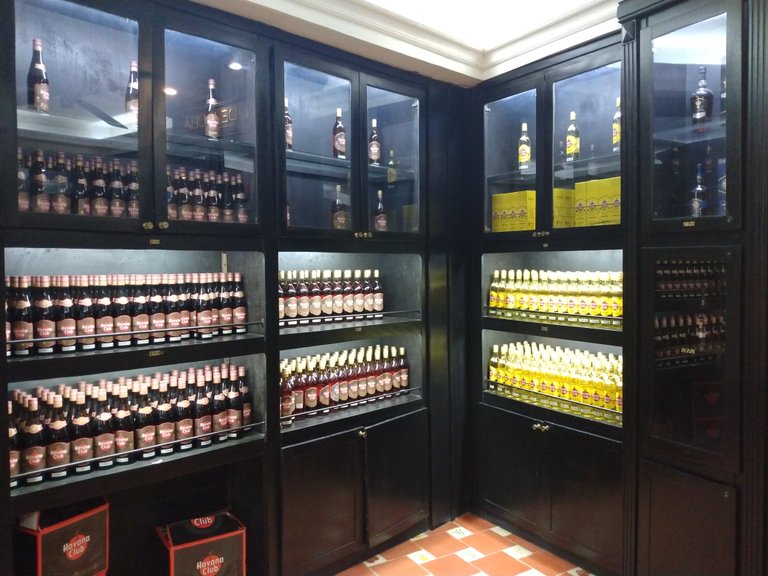
Friends, this is the end of our journey through the fascinating world of one of the most famous beverages. I would have liked to have presented clearer pictures, but the lighting of the place did not allow it, and I did not use flash. But I hope you found it interesting and I invite you to visit it.
See you soon!!!
All photos are mine, taken with my Moto g play (2021) mobile phone.
Translated at DeepL.
Versión en español
Hola comunidad de viajeros. Muchas felicidades por el nuevo año. A propósito de las celebraciones de fin de año quiero compartirles una reseña de mi visita al Museo del Ron Havana Club. Les confieso que no tomo ron, pero si me interesaba conocer acerca de la historia y elaboración de uno de los mejores rones del mundo y símbolo de cubanía. Este museo se encuentra junto a la avenida del puerto en el municipio Habana Vieja, ocupando una antigua mansión colonial restaurada del siglo XVIII y que pertenecía al Conde de la Montera. Si usted dispone visitarlo debe previamente realizar su reservación, pues los recorridos son guiados y en los idiomas inglés y español. Sin más preámbulos iniciemos nuestro recorrido.
Justo en el lobby nos llama la atención una escultura de la Giraldilla, ícono de la ciudad y que está presente en el logo que identifica al ron Havana Club. Representa a Isabel de Bobadilla quien fuera la esposa de Hernando de Soto, Capitán General de Cuba en 1538.
Luego nos encontramos con un hermoso patio interior, elemento arquitectónico característico de la época colonial ornamentado con sus columnas y hermosos ventanales con vitrales. Aquí los visitantes se sientan a esperar el turno de las rondas.
En un costado del patio interior se encuentra una caprichosa escultura de un niño campesino sosteniendo la botella del icónico ron, representando la conexión entre la cultura ronera y la tradición agrícola en la isla, destacando así el rol del campesino en la producción de la caña de azúcar, materia prima básica para la elaboración del ron.
Iniciamos el recorrido con el ascenso por una escalinata caracol que nos conduce a la segunda planta donde se encuentran las salas expositivas, pero antes cada visitante debe tocar la campana que se encuentra al inicio de la escalinata, lo cual alude la tradición en aquella época indicando el inicio de la jornada laboral en el ingenio.
En el trayecto nos encontramos con algunos ejemplares de utensilios empleados en los ingenios para la elaboración de la codiciada bebida. En este caso, en la foto de abajo observamos un alambique del siglo XIX
Ya en la segunda planta entramos a un pequeño recinto donde se proyecta al visitante una interesante presentación de 20 minutos acerca de la historia del ron Havana Club.
Concluida la presentación pasamos a la primera sala expositiva donde se encuentra el antiguo trapiche de madera que se utilizaba para extraer el jugo de la caña conocido como ´´guarapo´´ (bebida tradicional muy refrescante), precisamente este es el comienzo del proceso de elaboración del ron. Es importante destacar que para la elaboración de este tipo de ron es necesario que la caña de azúcar haya sido sembrada en Cuba, ya que las condiciones del suelo cubano y el clima.
Aquí se muestra la parte trasera del trapiche el cual consiste de un juego de rodillos entre los cuales se introducía la caña para ser exprimida y sacarle el jugo.
Posteriormente, ese jugo pasaba por una canaleta en el interior del artefacto hasta un recipiente en forma de un sartén hondo gigante donde era calentado a alta temperatura obteniéndose como resultado un sirope que se dejaba enfriar en reposo durante 48 h, período en el que empezaban precipitar cristales de azúcar en las paredes, quedando un líquido residual denominado ´´Melaza´´, el primer ingrediente principal que contribuirá a la futura mezcla que dará origen al ron.
Depósito donde se llevaba a cabo el proceso de cristalización del jugo de caña.
También se exponen otras piezas como una maqueta de la locomotora a vapor que se usaba para transportar la caña de azúcar, pues verdaderamente sin la prolífera industria ferroviaria en ese período hubiera sido imposible el desarrollo de la industria azucarera en Cuba.
Muestras de los principales Instrumentos de medición utilizados en el proceso de elaboración.
A continuación, entramos a un recinto muy peculiar donde se encuentra una preciosa maqueta que nos muestra a pequeña escala como era una típica fábrica donde se realizaban los procesos azucareros. Decirles que su diseñador recibió con esta obra de arte el premio de arquitectura en la década de los 90. En ella podemos deleitarnos del trencito que recorre el perímetro de la maqueta y las luces que salen de los inmuebles, confiriéndole vida a todo.
La siguiente sala está dedicada a las etapas de destilería y añejamiento, donde la melaza, agua, alcohol y una levadura especial de Havana Club se combinan y fermentan en unos barriles de roble blanco durante un cierto período de años determinado por los maestros del ron de Cuba.
Uno de los barriles está parcialmente destapado para que el visitante observe una imitación de la mezcla.
Un dato que me resultó interesante es que estos barriles deben tener al menos 15 años de uso para que así el ron no adquiera el sabor de la madera, entre más años tienen mejor. También decirles que durante el proceso de añejamiento no se deben tocar los barriles, pues la mezcla debe estar en reposo.
Vista general de la sala.
Aquí se observan el sistema de depósitos utilizados para los procesos de destilería. A partir de la primera fase de destilación se obtiene un agua ardiente con un 75% de alcohol.
Como productos finales además del ron Havana Club, se obtienen otras variedades del mismo, las cuales se muestran en la última sala expositiva. En las fotos de abajo les muestro cada una de ellas.
El recorrido finaliza con la degustación de una muestra del ron Havana Club en la barra.
En una de sus paredes cuelga un póster que muestra las variedades de tragos que usan como base al ron cubano.
Fotografías que muestran los principales bares legendarios de La Habana donde se ofertan estos codiciados tragos.
Amigos hasta aquí nuestro recorrido por el fascinante mundo de una de las bebidas más famosas. Me hubiera gustado haber presentado fotos más claras, pero la iluminación del local no lo permitió, además del no uso de flash. Pero bueno espero les haya resultado interesante e invitarlos a que lo visiten.
Hasta pronto!!!
Todas las fotos son mías, tomadas con mi teléfono móvil Moto g play (2021).
Traducido en DeepL.
The rewards earned on this comment will go directly to the people( @dkkfrodo ) sharing the post on Reddit as long as they are registered with @poshtoken. Sign up at https://hiveposh.com. Otherwise, rewards go to the author of the blog post.
Thanks for your support
You can check out this post and your own profile on the map. Be part of the Worldmappin Community and join our Discord Channel to get in touch with other travelers, ask questions or just be updated on our latest features.
Me encantó tu visita a este Museo. Muy interesante su historia. Gracias por compartir. Un abrazo 🤗
Muchas gracias Merchunga. Besos
Wow this place looks awesome!!
A bit of history on the process and actually seeing how they make rum? That is a big yummie and what a cool visit! (love these kinds of places where you can see how they make rum, or wine or beer or whatever!!)
Thanks Karinxxl for your vote and comment. I'm glad you like it!
Travel Digest #2432.
Become part of our travel community:
- Join our Discord
Hiya, @lizanomadsoul here, just swinging by to let you know that this post made it into our Top 3 in Your post has been manually curated by the @worldmappin team. If you like what we're doing, please drop by to check out all the rest of today's great posts and consider supporting other authors like yourself and us so we can keep the project going!Thanks @lizanomadsoul and Worldmappin time for your support.
Keep up the great work 💪
ame tu post , me encanto el recorrido , me senti en el museo contigo
Jjj Muchas Gracias Ami. Me regocija que te haya gustado. Bsss
Congratulations @reneyasmany! You have completed the following achievement on the Hive blockchain And have been rewarded with New badge(s)
Your next target is to reach 600 replies.
You can view your badges on your board and compare yourself to others in the Ranking
If you no longer want to receive notifications, reply to this comment with the word
STOPCheck out our last posts:
Thanks Hive buzz for Your vote and support
You're welcome @reneyasmany.
BTW, may we ask you to support our proposal so our team can continue its work?
You can do it on Peakd, ecency, or using HiveSigner
Thank you.
Excelente publicación en cuanto a la explicación y la calidad de las imágenes que muestras.
Revelas detalles que al menos yo ignoraba y que forman parte de la cultura y tradiciones de nuestro pueblo .
Gracias por compartir y ojalá que sigamos contando con tus publicaciones de manera más sistemática porque tus entregas son de una gran calidad. Feliz jornada. Salud y saludos.
Hola colega. Así es, muy interesante conocer la historia de las cosas que nos rodean. Trataré de seguir publicando temáticas semejantes. Muchas gracias por comentar. Saludos.
Thanks for your support.
Hello bro, thanks for your comment.
Thanks for your support